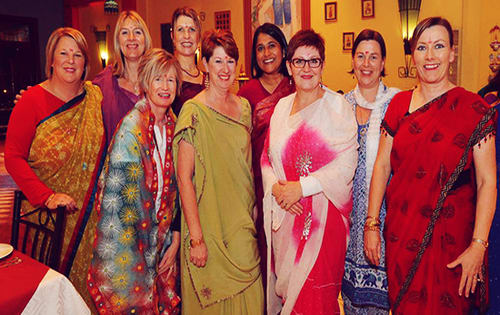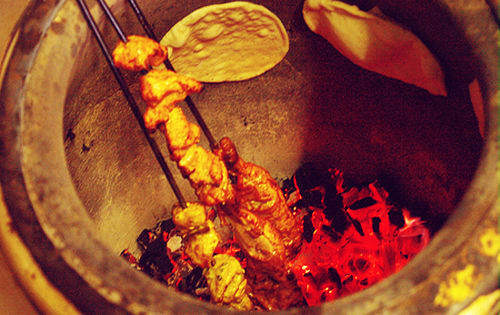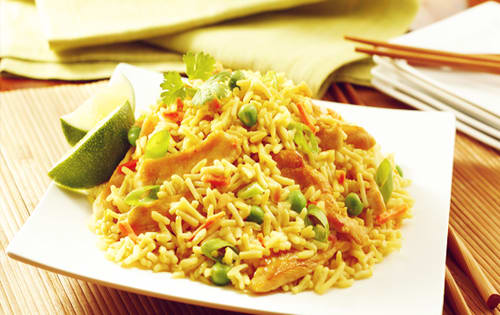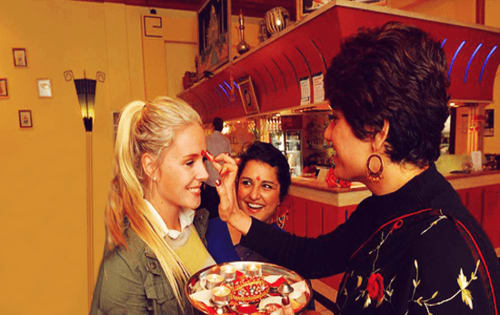A long journey becomes exciting and gets shorter by miles when you get accompanied by someone known. Similarly, unfamiliar places become familiar and admiring when you know that you have someone who cares for you and gives you the feeling of affinity and oneness. I am Tajinder Singh, and I welcome you all on my website. I came to Australia a long time ago and now I am one of the citizens of this beautiful country. Everyone misses the homeland and I was no exception. One of the things that I missed most and still I sometimes miss is the food of my country. This feeling is experienced by each and every Indian here atleast once a day in their busy schedule. This is what compelled me to think about a place where anyone can have the experience of Indian food; one of the best cuisines dominating all over the world. “Sargun” is a restaurant where you can enjoy every Indian dish to the best of its taste and perfection. Our each and every item will give each and you a feeling of kinship and togetherness even when you are thousands of miles away from the motherland. Main motive behind starting this restaurant is to bring all the Indians together and also make the world aware of the distinguished cuisines all over the world.
Namaste
"Namaste" , a unique word to greet someone is very commonly used in India. Almost every Indian knows the meaning as well as importance of this unique term. Not only by gestures, our guests are also greeted with our distinctive flavours and mouth watering recipes. As Indian culture is one of the most diversified cultures in the world, Indian flavour also gets change from street to street and also state to state. We have chosen to present you with some of the best and eccentric dishes enriched with Indian flavour. Indian spices blended with western dishes will give you a memorable and finger-licking experience.
A unique cuisine
Incredibly varied, Indian cuisine is a combination of many communities and cultures. Most of the intricate dishes are derived from north India and were inherited from the invading Persian Moghuls. The popular dishes such as Pulaos and Biryanies are cherished around whole of the country due to the special ingredients used. Meat, Ghee(clarified butter), nuts and saffron are the components which are used in an abundant manner that make these dishes well-liked by everyone. Kormas of northern India and Tandoori dishes which are complemented by wheat bread such as Chapattis, Paranthas and Naan and have been well-renowned in India. Hot, spiced tea is the favorite drink in northern parts of India; no matter what type of weather is, whether it is winter or summer. Rice is the staple food in south and is served in each and every item of the food. South-Indian dishes are spicier than dishes in north with chillies and coconut milk being popular ingredients. Unlike North-Indians who are fond of spicy and barbecued food, steamed food is much preferred in southern part. One of the world’s finest coffees is being produced in the Nilgiri hills situated in the south which is famous all over the world. Preparation and presentation of Indian recipes varies from region to region. Analyzing all this, difference between the food of North and South India can be broadly illustrated.


Spices of life
Around 5000 years ago, spices and herbs were used by the Himalayan Sages as a natural means for balancing human body metabolism. The “cooling” and “heating” effect of these spices made them part of the Ayurveda i.e. Hindu science of medicine, eventually distinguishing Indian cooking and ingredients from any other cuisine in the world. The origin of popular aphorism “The spice of Life” can perhaps be traced to those of ancient times.
Tandoor
Traditional mud stoves and clay ovens are still used for cooking purposes and to give the food a special smoked flavour, they are fed with coal or pine wood. One such type of oven is Tandoor which is shaped as barrel with live coal at the bottom making it very hot. The food is first prepared in a special marinade which is first spiked on a long metal rod and inserted into the oven for roasting. It was introduced in India prior to the 13th century and eventually it became so popular among the reigning moghuls’ emperor Jehangir a connoisseur of both good food and living and was considered as an essential item in his travelling kit for his hunting expedition.
Rice
Rice is known to be one of the most ancient dishes which is considered as an important part of Indian meal. From around 3000 B.C., rice is known to have been used in the Indus valley. Almost 1000 varieties of rice are grown all over the India. Various varieties of rice differ in their fragrance, taste and color (white, yellow and reddish brown).
PULAO originated from the Persian word which means “Rice boiled in meats and spices” is also one of the most agreeable dishes in India.
BIRYANI is the Persian word which means “Fried” or “Roasted” which is being regarded as one of the finest expressions of Indian cooking. It reached its height of perfection in the reign of Mughal emperor Shah Jehan in 17th century. Categories of meat generally employed then were lamb or mutton.
Roti
Roti meaning bread is the most commonly spoken word among 125 crore Indians for baked or fried bread on an open fire. Chapati: Roti when it is roasted over an open fire on a “Tava”. NAAN: The Persian word for chapatti which is generally applied to refined white bread with flour. Enormous variety of the Indian Breads vary from region to region and are considered to be one of the best to make Indian dining experience a relishing one.











